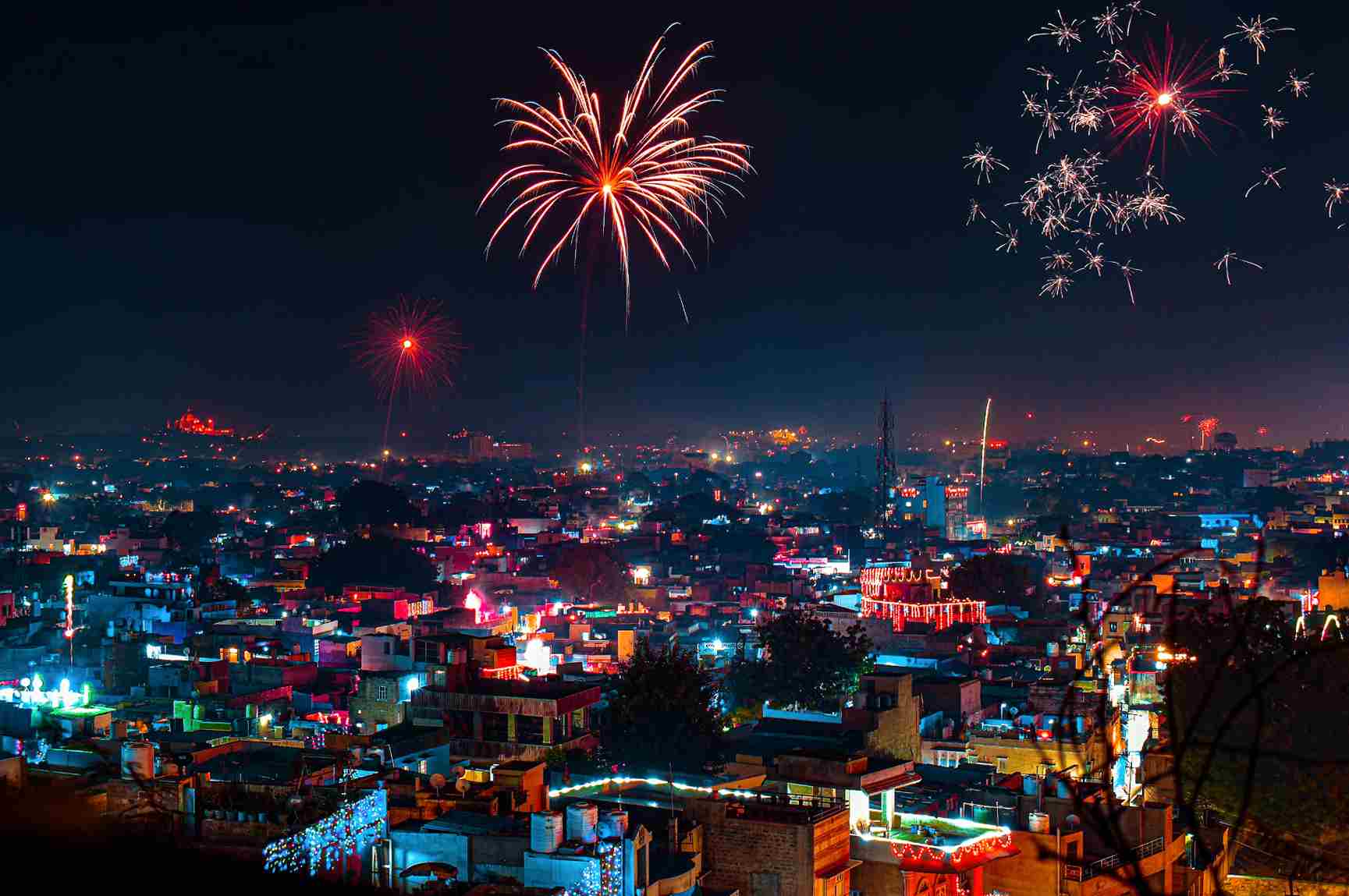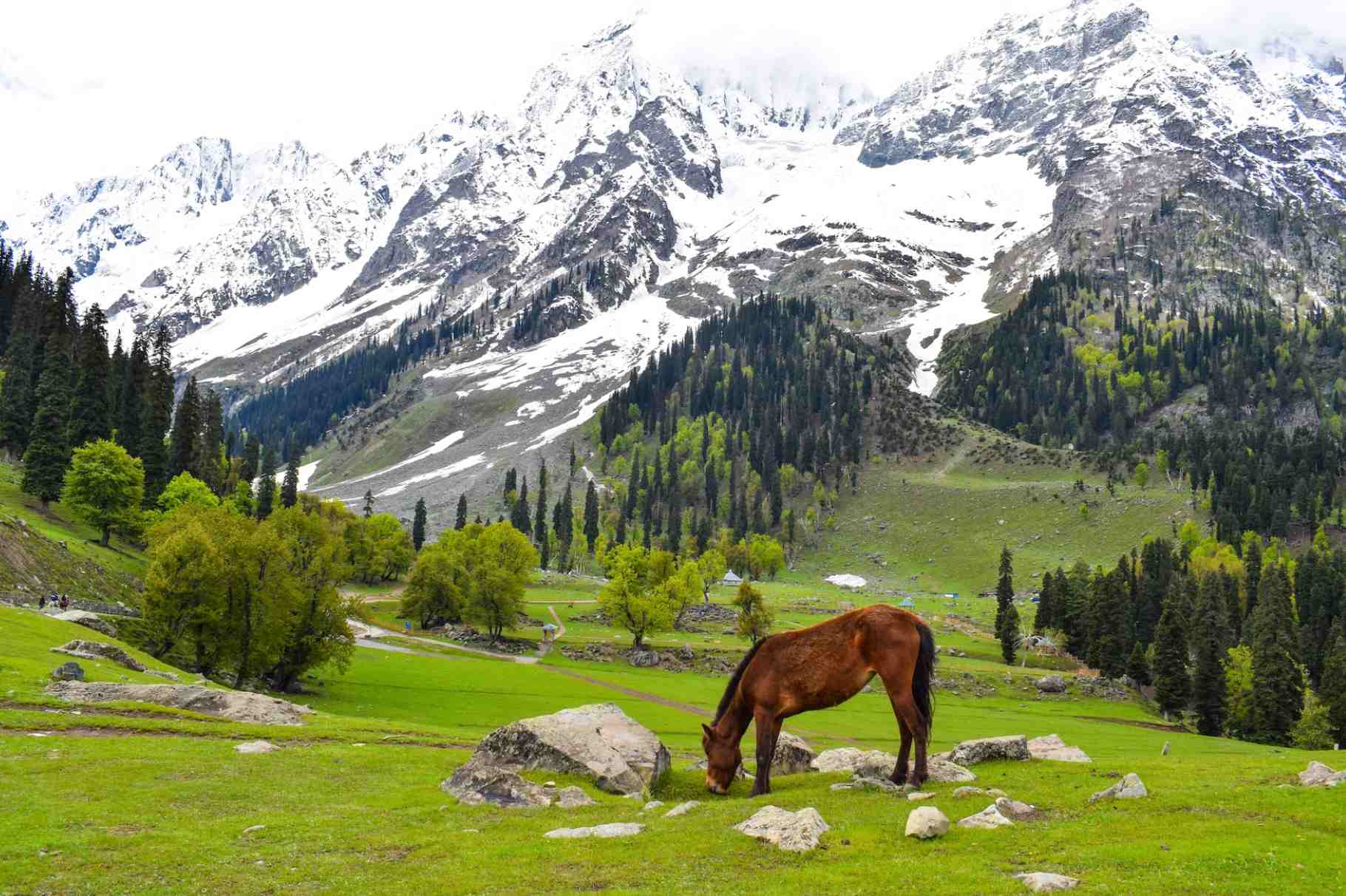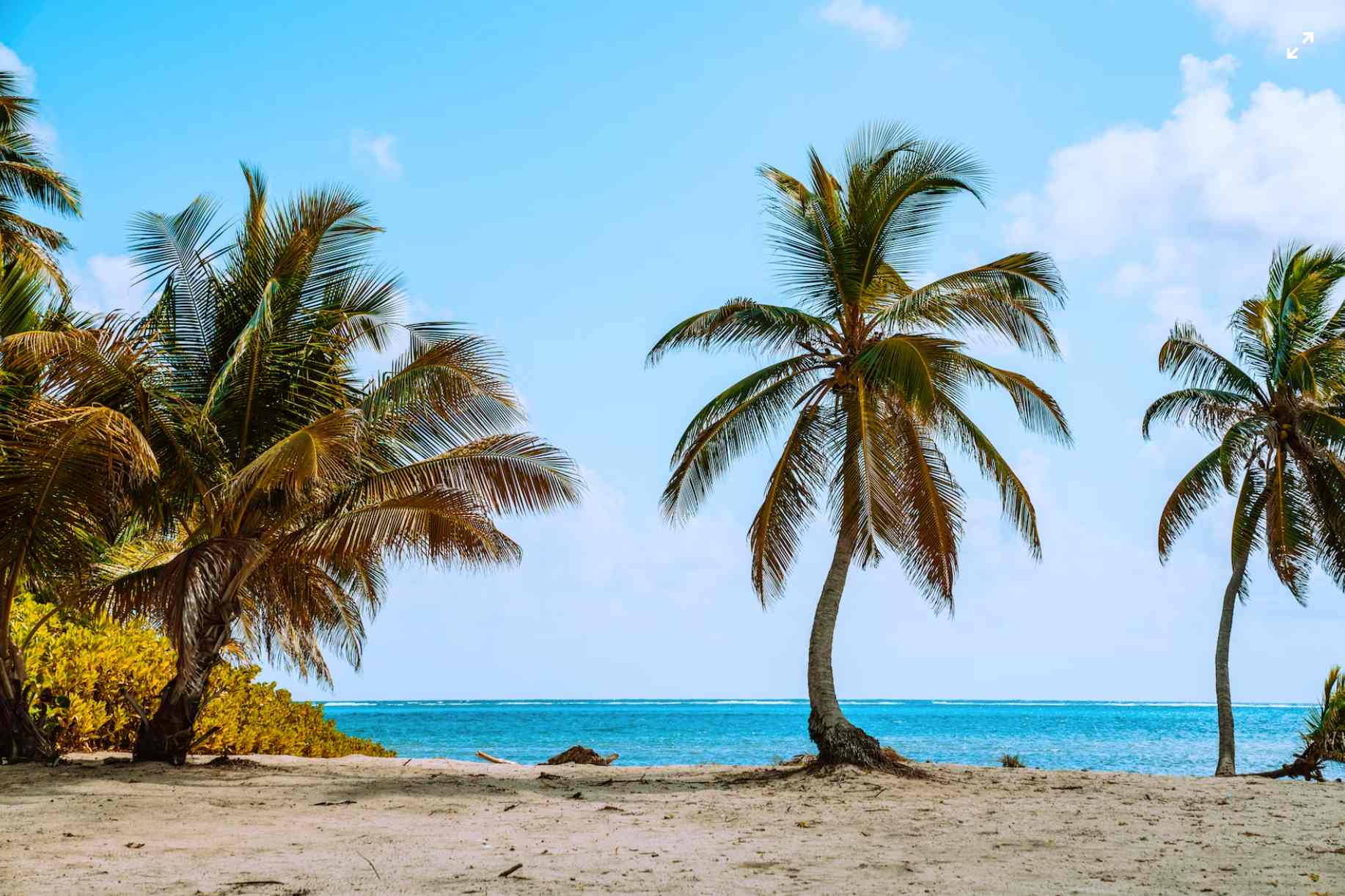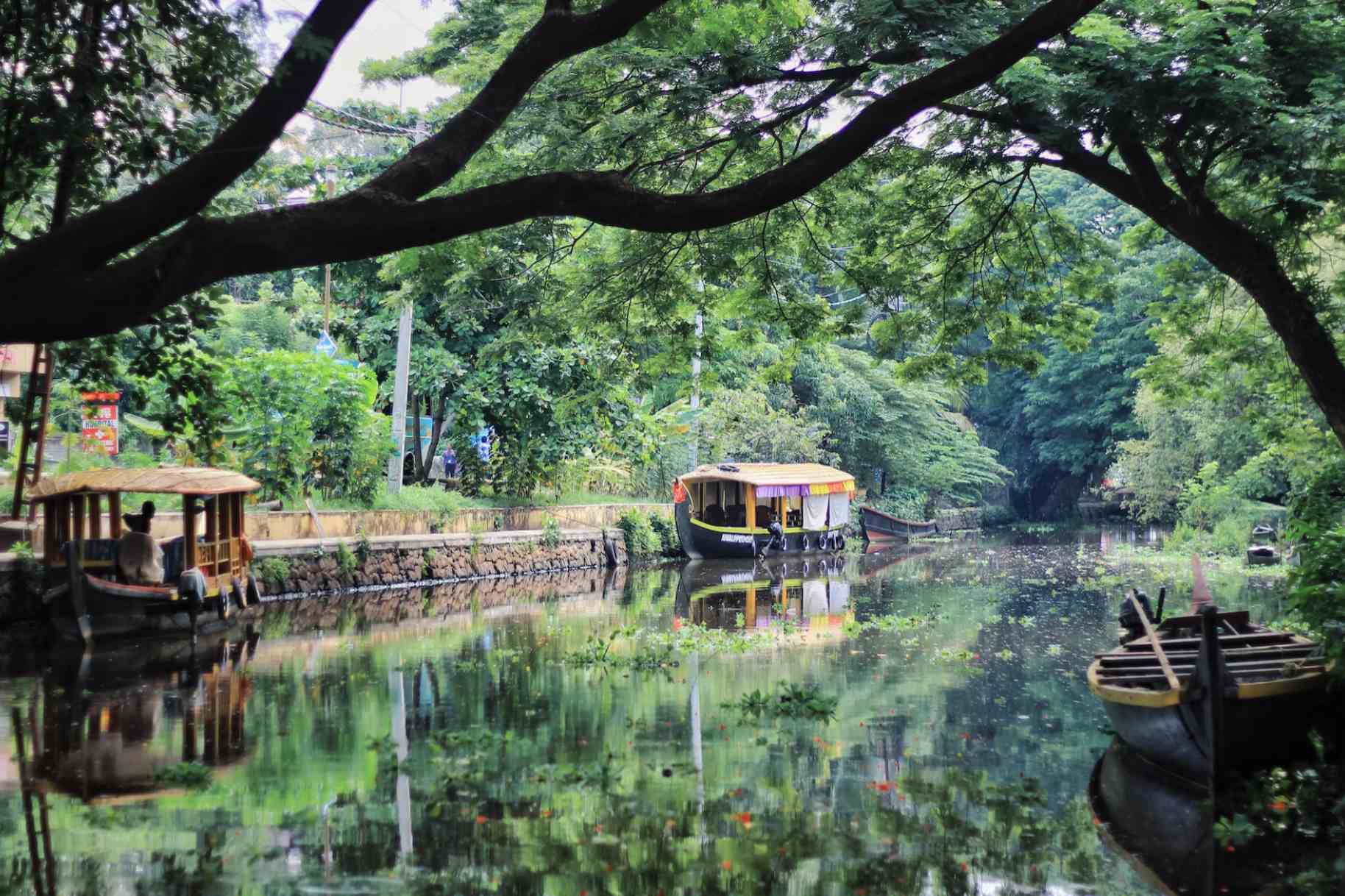The Western Ghats: A Biodiversity Hotspot
The Western Ghats, also known as the Sahyadri mountains, is a mountain range that runs parallel to the western coast of India. It is a UNESCO World Heritage Site and one of the eight "hottest hotspots" of biological diversity in the world. Let's explore some interesting facts about the Western Ghats!
Geographical Location and Length
The Western Ghats stretch for 1,600 km from the Tapti River in Gujarat to Kanyakumari in Tamil Nadu. The range passes through six states in India: Gujarat, Maharashtra, Goa, Karnataka, Kerala, and Tamil Nadu. The mountain range starts at the border of Gujarat and Maharashtra and runs down to Kanyakumari in Tamil Nadu.
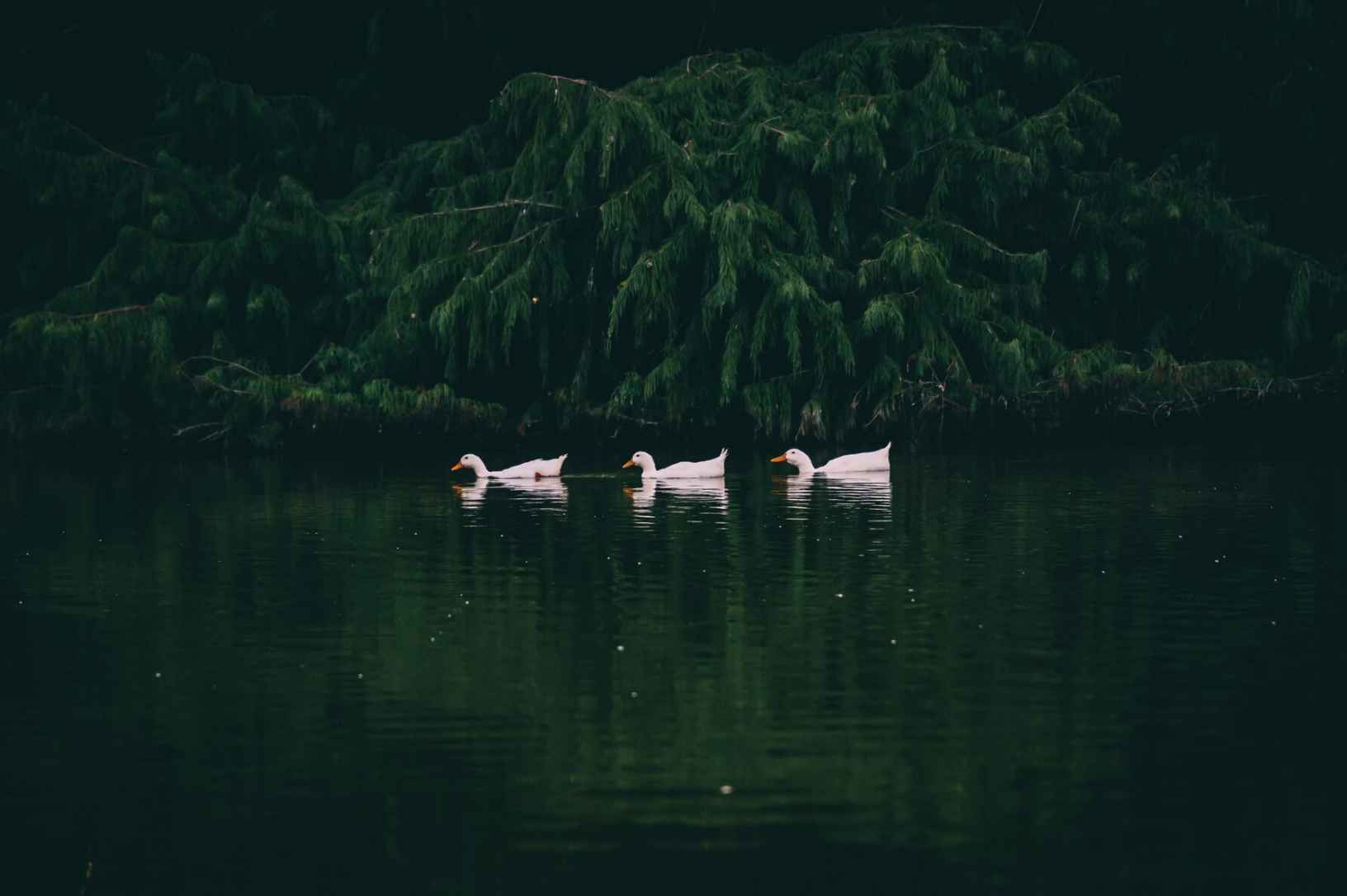
Also read: Leh Ladakh: A Journey to the Heart of the Himalayas
Local Names of Western Ghats
The Western Ghats are known by different names in different regions of India. In Tamil Nadu, it is known as the Nilgiri hills, in Karnataka as the Malnad hills, in Maharashtra as the Sahyadri range, and in Kerala as the Anaimalai hills.
WESTERN GHATS REGION
The Western Ghats region is a UNESCO World Heritage Site and is one of the eight "hottest hotspots" of biological diversity in the world. It is a biodiversity hotspot and a treasure trove of endemic species found nowhere else on earth. The Western Ghats region is also known as the Sahyadri Mountains.
WESTERN GHATS AND EASTERN GHATS
The Eastern Ghats are a range of mountains that run parallel to the eastern coast of India. The Western Ghats and the Eastern Ghats together form a continuous mountain range that runs parallel to the coastline of India.
Western Ghats States
The Western Ghats run parallel to the western coast of India, stretching over a distance of about 1,600 km. The mountain range spans several states, including Kerala, Tamil Nadu, Karnataka, Goa, Maharashtra, and Gujarat.
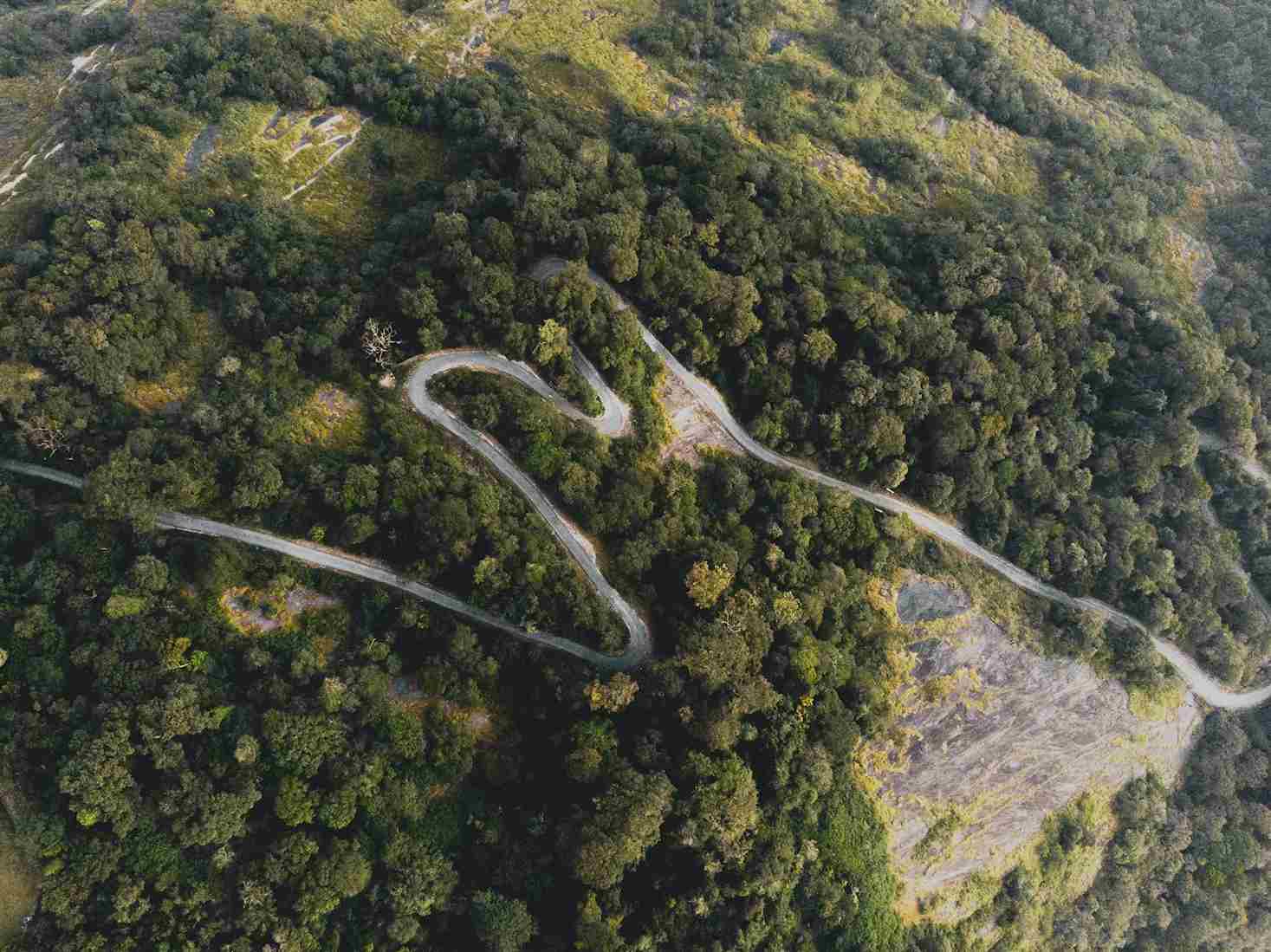
Also read: Exploring India on the open road: The Top 10 road trips for a life-changing experience
Western Ghats in Kerala: Kerala is home to a significant portion of the Western Ghats and boasts of some of the most stunning natural landscapes in the region. The Western Ghats in Kerala are spread across six districts in the state, including Wayanad, Kozhikode, Kannur, Kasaragod, Palakkad, and Idukki.
Here are some of the top attractions of the Western Ghats in Kerala:
Chembra Peak: Located in Wayanad district, Chembra Peak is the highest peak in the region and a popular spot for trekking.
Munnar: A hill station in the Western Ghats, Munnar is known for its tea plantations, waterfalls, and beautiful vistas.
Silent Valley National Park: A UNESCO World Heritage Site, this national park in Palakkad district is home to rare species of flora and fauna, including the lion-tailed macaque.
Anamudi: The highest peak in South India, Anamudi is located in the Western Ghats of Idukki district.
Meenmutty Falls: Located in Wayanad district, this beautiful waterfall is a popular tourist spot and a great place for trekking.
Apart from these, the Western Ghats in Kerala also have several wildlife sanctuaries and national parks, including the Wayanad Wildlife Sanctuary, Periyar National Park, and Silent Valley National Park. These parks are home to a variety of animal species such as elephants, tigers, leopards, and birds.
Visitors can also indulge in activities such as trekking, camping, and wildlife safaris while exploring the Western Ghats in Kerala. Additionally, the region is also home to several indigenous tribes who have lived in harmony with nature for centuries, providing a unique cultural experience to visitors.
Western Ghats in Tamil Nadu: The Western Ghats in Tamil Nadu are located along the western coast of the state and stretch across the districts of Coimbatore, Erode, Krishnagiri, Dindigul, Nilgiris, Salem, Tirupur, and Theni. This region is known for its rich biodiversity and is home to several rare and endangered species of plants and animals.
Some of the major wildlife sanctuaries and national parks in the Western Ghats of Tamil Nadu include:
Mudumalai National Park: Located in the Nilgiris district, this national park is known for its diverse flora and fauna, including tigers, leopards, elephants, and several species of deer.
Silent Valley National Park: This park is located in the Palakkad district of Kerala and is part of the Nilgiri Biosphere Reserve. It is home to several endemic species of plants and animals.
Indira Gandhi Wildlife Sanctuary and National Park: This sanctuary is located in the Coimbatore and Tirupur districts and is home to several species of mammals, birds, and reptiles.
Anamalai Tiger Reserve: Located in the Coimbatore district, this reserve is known for its tiger population and is home to several other species of wildlife, including elephants, leopards, and macaques.
Kalakkad Mundanthurai Tiger Reserve: Located in the Tirunelveli district, this reserve is home to several species of mammals, including tigers, elephants, and leopards.
Apart from the wildlife sanctuaries and national parks, the Western Ghats in Tamil Nadu are also known for their scenic beauty and several popular hill stations are located in this region. Some of the popular hill stations include Ooty, Kodaikanal, and Yercaud.
In recent years, the Western Ghats in Tamil Nadu have come under threat due to deforestation and illegal mining activities. Several conservation initiatives have been launched to protect the region's biodiversity and promote sustainable development.
Western Ghats in Karnataka: Karnataka is home to a significant portion of the Western Ghats, with the mountain range covering nearly 38% of the state's total area. The Western Ghats in Karnataka are spread across the districts of Uttara Kannada, Shimoga, Chikmagalur, Hassan, Kodagu, and Dakshina Kannada.
Some of the major peaks in the Karnataka Western Ghats include Mullayanagiri, which is the highest peak in the state, Kudremukh, Baba Budangiri, and Pushpagiri. The Western Ghats in Karnataka are also home to several rivers, including the Tunga, Bhadra, Sharavathi, Netravati, and Kaveri.
The Western Ghats in Karnataka are a biodiversity hotspot and are home to a wide variety of flora and fauna. The region is particularly known for its birdlife, with several species of endemic and migratory birds found in the region. The forests of the Western Ghats in Karnataka are also home to several species of large mammals, including elephants, tigers, leopards, and gaurs.
The Western Ghats in Karnataka also offer several opportunities for trekking and outdoor activities. Some of the popular trekking trails in the region include the Kudremukh Trek, the Mullayanagiri Trek, and the Kumara Parvatha Trek.
Overall, the Western Ghats in Karnataka are a beautiful and ecologically significant region that is worth exploring for anyone interested in nature and adventure.
Western Ghats in Goa: Goa is the smallest state in India, but it is known for its beautiful beaches and lush green forests. The Western Ghats in Goa cover an area of 1,429 square kilometres, and it is a biodiversity hotspot. The region is home to several rare and endangered species, including the Malabar pied hornbill, Indian pangolin, and the king cobra.
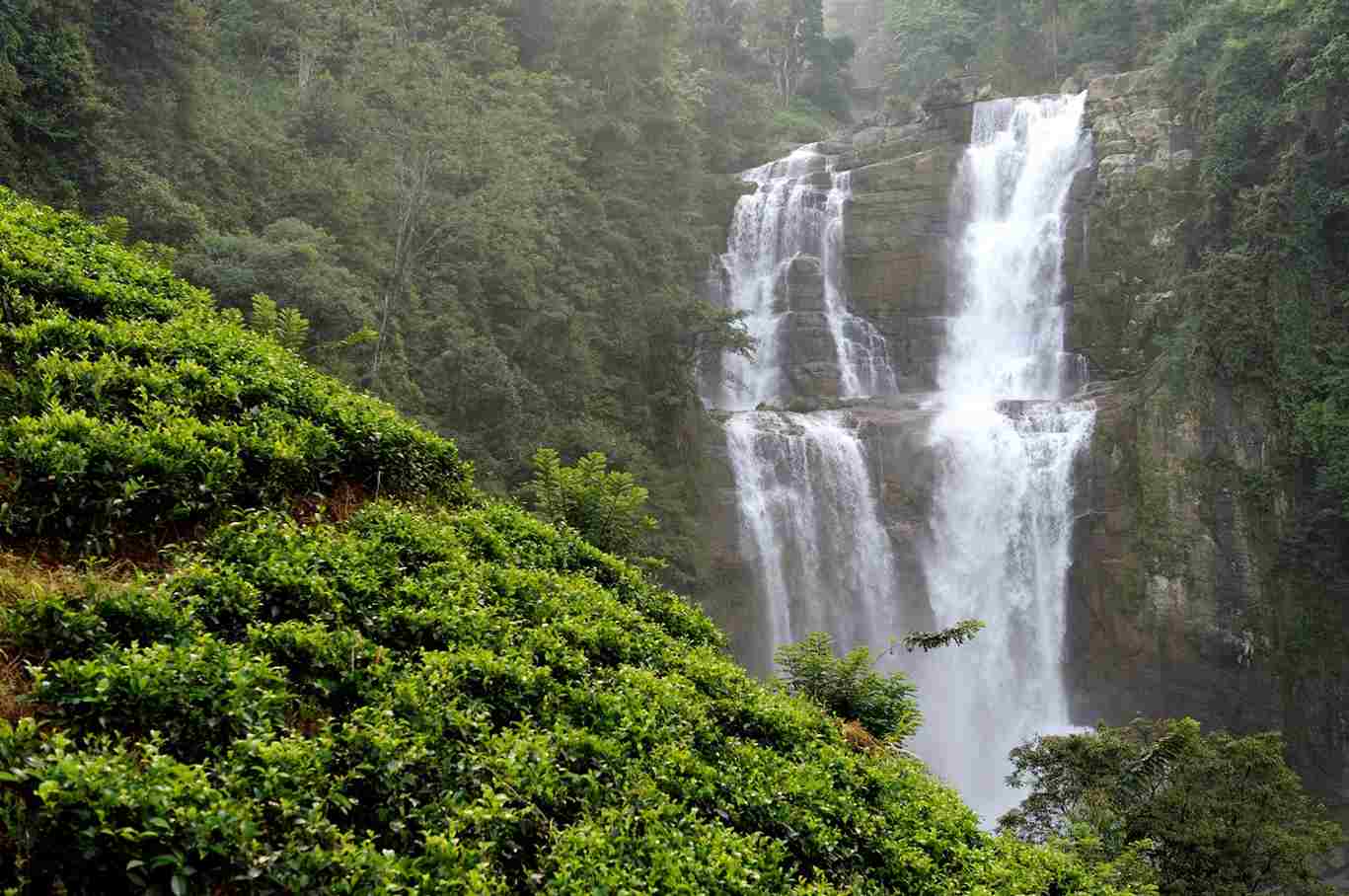
Also read: Nature's Fury: Exploring the Best Waterfalls in India
The Western Ghats in Goa are also popular for trekking and hiking. There are several trekking trails in the region, including the Dudhsagar Falls trek, which is a 14 km trek that takes you through dense forests, streams, and waterfalls. The Vagheri Peak trek is another popular trek that offers stunning views of the Western Ghats.
Western Ghats in Maharashtra: The Western Ghats in Maharashtra are spread across six districts, including Mumbai, Pune, and Nashik. The region is home to several protected areas, including the Bhimashankar Wildlife Sanctuary, Tansa Wildlife Sanctuary, and the Koyna Wildlife Sanctuary. The Western Ghats in Maharashtra are known for their high level of endemism, with several species of plants and animals found only in this region.
The region is also popular for trekking, with several popular trekking trails like the Rajmachi trek, Harishchandragad trek, and the Kalsubai trek, which is the highest peak in Maharashtra. The region is also known for its waterfalls, including the Lingmala Waterfall, Thoseghar Waterfall, and the Vajrai Waterfall.
Western Ghats in Gujarat: The Western Ghats range also extends into the Indian state of Gujarat. However, the region is not as prominent as the Western Ghats in other states like Maharashtra, Karnataka, and Tamil Nadu.
The Western Ghats in Gujarat stretch for about 160 km along the state's border with Maharashtra. They are also known as the Sahyadri ranges in Gujarat. The highest peak in Gujarat's Western Ghats is Saputara peak, which stands at an elevation of 1,090 metres.
The region is home to a diverse range of flora and fauna, including various species of birds, reptiles, and mammals. Some of the common animals found in the region include the Indian giant squirrel, Indian pangolin, barking deer, and sambar deer.
One of the most popular attractions in the Western Ghats in Gujarat is the Saputara hill station. It is located on the top of the Saputara range and is known for its stunning views of the surrounding landscape. The region is also known for its rich tribal culture and handicrafts, which are unique to the region.
In recent years, the Western Ghats in Gujarat have become a popular destination for adventure enthusiasts. Trekking and hiking are popular activities in the region, with several trails of varying difficulties available for trekkers.
Overall, while not as well-known as other Western Ghats regions, the Western Ghats in Gujarat are still a beautiful and unique region to explore for those looking to discover the natural beauty and cultural heritage of the area.
Flora and Fauna of Western Ghats
The Western Ghats are home to a rich diversity of flora and fauna. It is estimated that there are around 4,000 species of flowering plants, 500 species of birds, 139 species of mammals, 179 species of amphibians, and 290 species of freshwater fish in the Western Ghats.
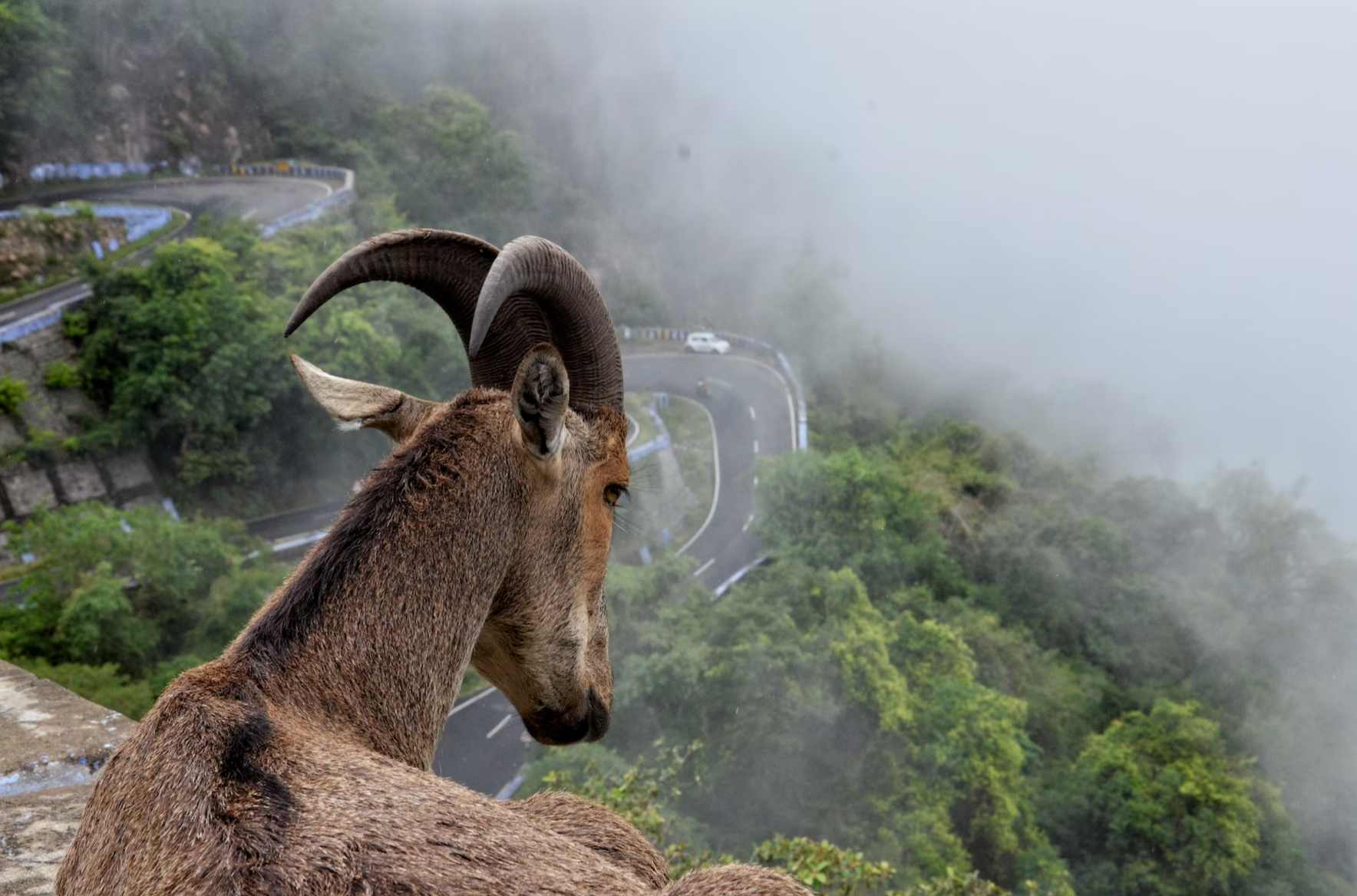
Also read: Exploring the Flora and Fauna of Munnar: A Nature Lover's Guide
WILDLIFE IN THE WESTERN GHATS
The Western Ghats are home to a wide variety of flora and fauna. It is estimated that there are around 5,000 species of flowering plants, 139 mammal species, 508 bird species, 179 amphibian species, and 6,000 insect species in the Western Ghats. Some of the iconic animals found in the Western Ghats include:
Indian Elephants: As one of the largest land animals in the world, Indian elephants are a majestic and awe-inspiring species. These gentle giants can be found throughout India, as well as in neighbouring countries like Nepal, Bhutan, and Bangladesh. Indian elephants are known for their intelligence, social behaviour, and incredible strength, which makes them important cultural and ecological symbols in many parts of South Asia.
Bengal Tigers: Bengal tigers are one of the most iconic and revered animals in India, known for their powerful build, striking orange coat, and elusive nature. These big cats can be found in a number of different habitats throughout India, from dense forests to grasslands and even swamps. Unfortunately, Bengal tigers are also an endangered species due to habitat loss, poaching, and other human activities.
Indian Leopards: Indian leopards are a subspecies of the common leopard that can be found in various parts of India, including forests, mountains, and grasslands. These big cats are known for their agility, adaptability, and elusive nature, which makes them a challenging but rewarding sight for wildlife enthusiasts. Like Bengal tigers, Indian leopards are also threatened by habitat loss and other human activities.
Nilgiri Tahr: The Nilgiri tahr is a unique and endangered species of ungulate that is found only in the mountains of the Western Ghats in southern India. These animals are known for their shaggy coats, curved horns, and impressive climbing abilities, which allow them to navigate the steep and rocky terrain of their mountainous habitat. Unfortunately, the Nilgiri tahr is also under threat from habitat loss and hunting.
Indian Bison (Gaur): The Indian bison, also known as the gaur, is one of the largest and most powerful wild cattle species in the world. These impressive animals can be found in various parts of India, including the Western Ghats, where they are an important ecological and cultural symbol. However, like many other wild animals in India, the Indian bison is also threatened by habitat loss, poaching, and other human activities.
Lion-tailed Macaque: The lion-tailed macaque is a unique and critically endangered species of monkey that is found only in the Western Ghats region of India. These animals are known for their striking appearance, which includes a distinctive mane of fur around their faces and a long, tapered tail. Unfortunately, habitat loss and fragmentation have pushed the lion-tailed macaque to the brink of extinction, making conservation efforts more important than ever.
Indian Giant Squirrel: The Indian giant squirrel is a stunning and arboreal species of rodent that is found throughout India, including in the Western Ghats region. These animals are known for their vibrant, multi-colored fur, which ranges from bright orange to deep purple. Despite their beauty, Indian giant squirrels are also under threat from habitat loss and other human activities.
Malabar Giant Squirrel: The Malabar giant squirrel is another large and colorful species of squirrel that is found only in the Western Ghats region of India. These animals are known for their impressive jumping abilities, which allow them to navigate the dense forest canopy with ease. Unfortunately, like many other species in the region, the Malabar giant squirrel is threatened by habitat loss and other environmental pressures.
Charmadi Ghat and Other Passes
The Western Ghats are a series of mountain ranges that are intersected by numerous passes. Some of the famous passes in the region include:
Charmadi Ghat: This is a mountain pass that connects Dakshina Kannada district to Chikmagalur district in Karnataka. The pass is known for its scenic beauty and is a popular destination for trekking and hiking.
Sahyadri Ghat: This is a mountain pass that connects Mumbai to Pune in Maharashtra. The pass is known for its historic forts, waterfalls, and scenic views.
Paschim Ghat: This is a series of mountain passes in the Western Ghats that connect the Konkan coast to the Deccan Plateau. The passes are known for their natural beauty and are popular destinations for trekking and sightseeing.
Trekking in Western Ghats
Trekking in Western Ghats is a popular activity for nature enthusiasts and adventure seekers alike. The range offers a plethora of trekking routes, from easy to challenging, with stunning views of lush green forests, cascading waterfalls, and majestic peaks. Here are some highlights:
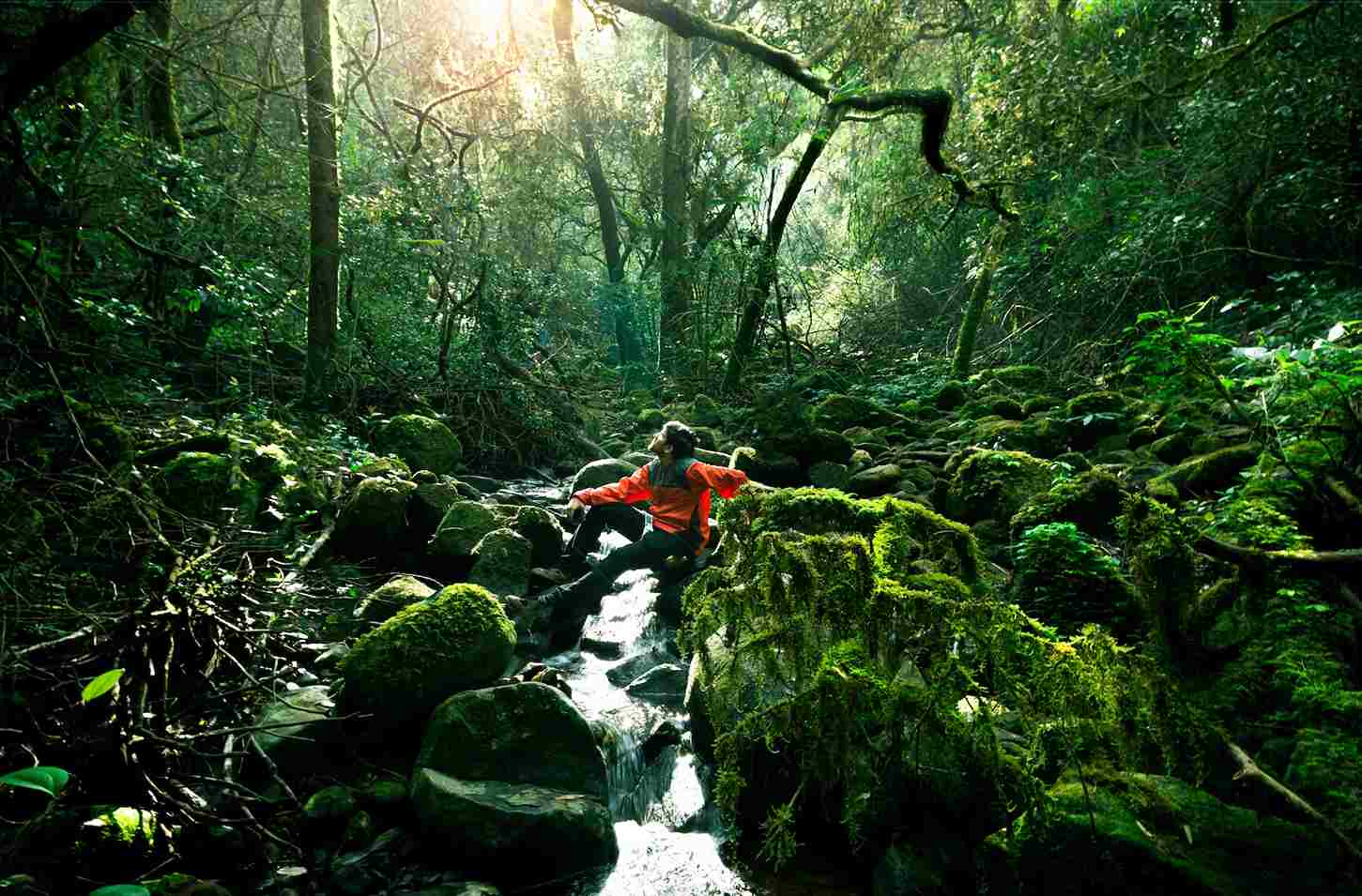
Also read : Conquer the Great Indian Wilderness: 5 Most Challenging Treks in India
Kodachadri Trek: Located in the Shimoga district of Karnataka, Kodachadri is a moderate-level trek that takes you through dense forests, waterfalls, and grasslands. The highlight of the trek is the panoramic view of the Western Ghats from the summit.
Chembra Peak Trek: Situated in Wayanad, Kerala, the Chembra Peak Trek is a challenging one-day trek that takes you through tea plantations, forests, and a heart-shaped lake. The highlight of the trek is the breathtaking view of the Western Ghats from the summit.
Kudremukh Trek: Kudremukh, which means "horse face," is a mountain peak located in the Chikmagalur district of Karnataka. The trek is known for its scenic beauty and is moderate in difficulty. The highlight of the trek is the panoramic view of the Arabian Sea and the Western Ghats from the summit.
Rajmachi Trek: The Rajmachi Trek is located in the Sahyadri mountain range in Maharashtra. It is a moderate-level trek that takes you through lush green forests and ancient forts. The highlight of the trek is the view of the Kondana Caves and the Kalbhairav Temple.
Meesapulimala Trek: The Meesapulimala Trek is located in Munnar, Kerala, and is a moderate-level trek that takes you through tea plantations, shola forests, and grasslands. The highlight of the trek is the view of the sunrise over the Western Ghats from the summit.
Trekking in the Western Ghats is a must-do activity for adventure enthusiasts, nature lovers, and anyone who wants to explore the beauty of the region. Whether you are a beginner or an experienced trekker, there are routes for everyone. With a variety of terrains, flora, and fauna, the Western Ghats offer an unforgettable experience.
Western Ghats nature stays, camping, and eco-friendly stays
Western Ghats Nature Stays:
The Western Ghats are home to many nature stays and eco-friendly accommodations that offer a unique experience for visitors.
These stays range from simple campsites to luxurious lodges and resorts, all nestled within the natural beauty of the region.
Visitors can choose to stay in treehouses, bamboo cottages, or tents, and enjoy activities like hiking, wildlife spotting, and birdwatching.
Some popular nature stays in the Western Ghats include Rainforest Retreat in Karnataka, Thekkady Eco Tourism in Kerala, and Dew Drops Jungle Resort in Tamil Nadu.
Camping:
Camping in the Western Ghats is a great way to experience the wilderness and connect with nature.
There are several camping sites throughout the region that offer different levels of comfort, from basic tent sites to more luxurious glamping options.
Visitors can camp in the forest or by the riverside and enjoy activities like trekking, stargazing, and bonfires.
Popular camping sites in the Western Ghats include Bhandardara in Maharashtra, Kabini River in Karnataka, and Silent Valley in Kerala.
Eco-Friendly Stays:
Eco-friendly stays in the Western Ghats are designed to minimise the impact on the environment and promote sustainable tourism.
These accommodations use renewable energy, recycle waste, and promote conservation and local communities.
Visitors can stay in eco-friendly resorts, homestays, and farmstays and learn about the local culture and traditions.
Some popular eco-friendly stays in the Western Ghats include Spice Village in Kerala, Dhole's Den in Karnataka, and Svasara Jungle Lodge in Maharashtra.
Using Sneakout for Bookings:
Sneakout is a travel platform that offers a wide range of accommodations and experiences in the Western Ghats and other destinations.
Visitors can use Sneakout to find nature stays, camping sites, and eco-friendly stays in the Western Ghats and book them online.
Sneakout offers competitive prices, easy booking and cancellation policies, and 24/7 customer support.
Visitors can also find reviews and recommendations from other travellers and plan their itinerary using Sneakout's trip planner tool.
Conservation of Western Ghats
The Western Ghats are recognized as one of the world's eight “hottest hotspots” of biodiversity. However, like many other natural habitats around the world, they are facing threats due to human activities such as deforestation, mining, and construction of dams. Therefore, conservation of the Western Ghats is crucial to protect the unique flora and fauna and maintain the ecological balance of the region.
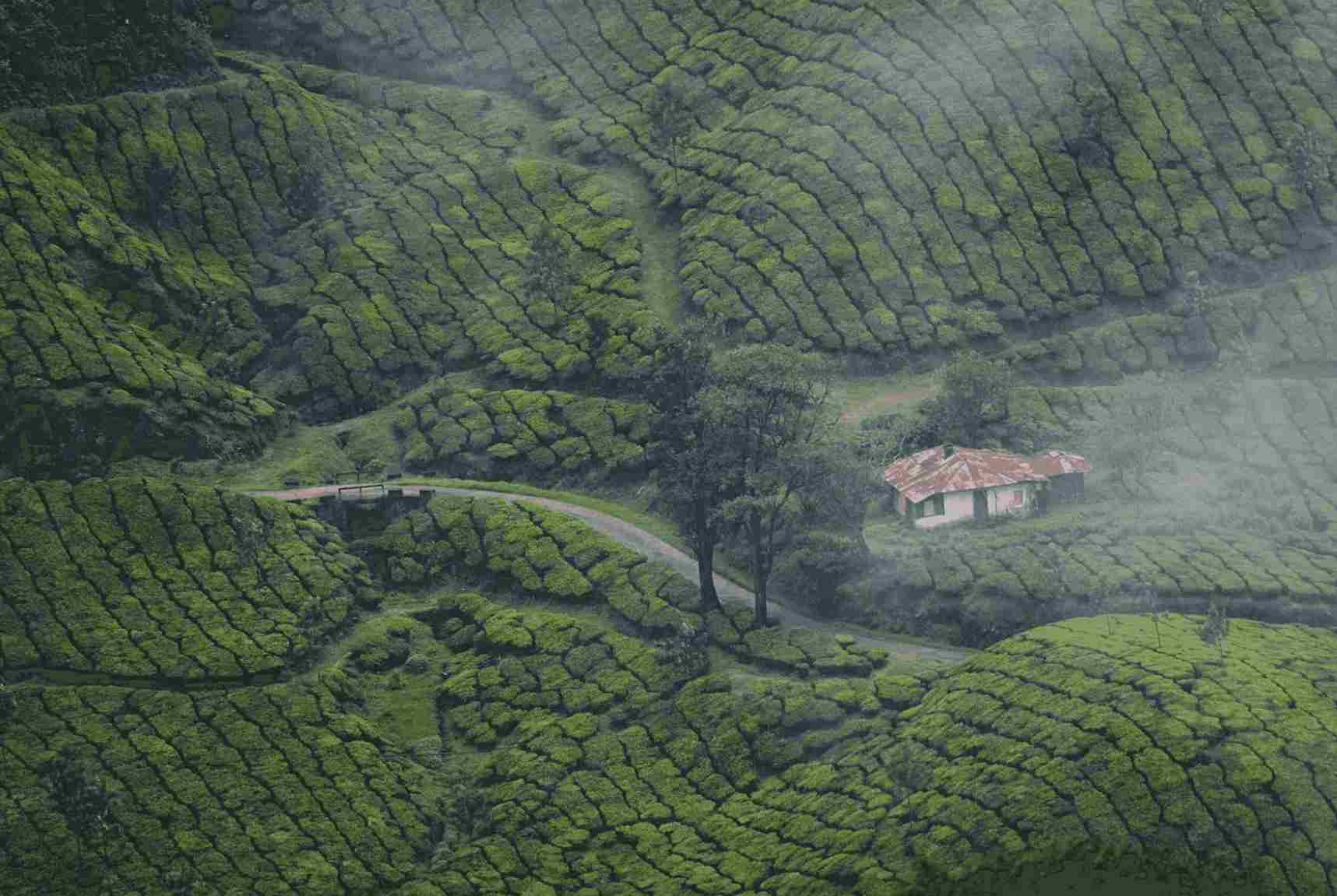
Here are some of the conservation efforts that are being undertaken to protect the Western Ghats:
National Parks and Wildlife Sanctuaries: There are several national parks and wildlife sanctuaries established in the Western Ghats, such as Silent Valley National Park, Periyar National Park, and Bandipur National Park. These protected areas help in preserving the natural habitats of various species.
Forest Conservation: Forest conservation measures are being implemented in the Western Ghats to prevent deforestation and ensure the sustainable use of forest resources.
Endangered Species Conservation: Various programs are being carried out to conserve the endangered species of the Western Ghats such as the Lion-tailed Macaque and the Nilgiri Tahr.
Community Participation: Community participation is crucial in the conservation of the Western Ghats. Several programs are being implemented to raise awareness among the local communities and involve them in the conservation efforts.
Research and Monitoring: Research and monitoring programs are being conducted to study the biodiversity of the Western Ghats and monitor the impact of human activities on the ecosystem.
The Western Ghats are a unique and ecologically significant region that must be conserved for the benefit of future generations. It is important for all stakeholders to come together and work towards the conservation of this natural wonder. The Western Ghats are a treasure trove of biodiversity, home to numerous endemic species of animals and plants. With its scenic mountain passes and opportunities for trekking and hiking, the Western Ghats are a popular destination for nature enthusiasts. The conservation of this region is crucial for maintaining its ecological balance and preserving its beauty for future generations to enjoy.











